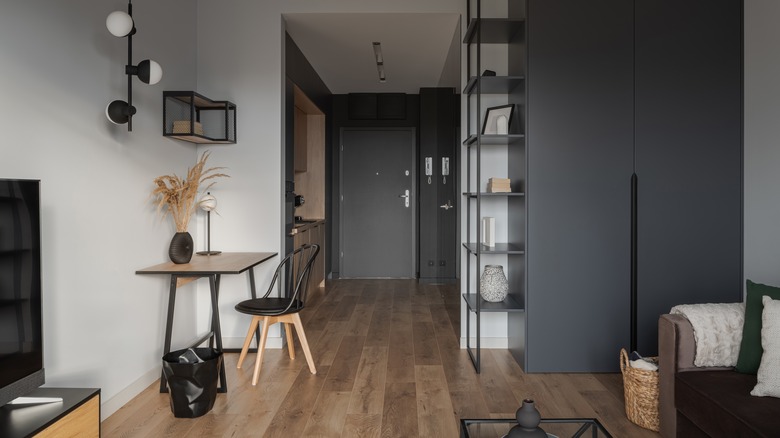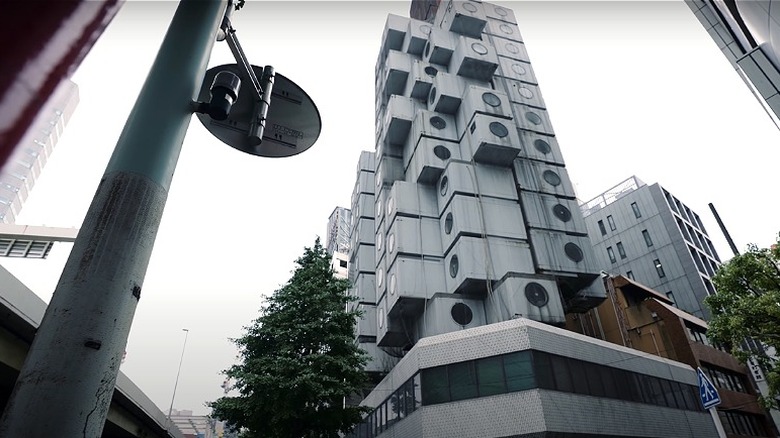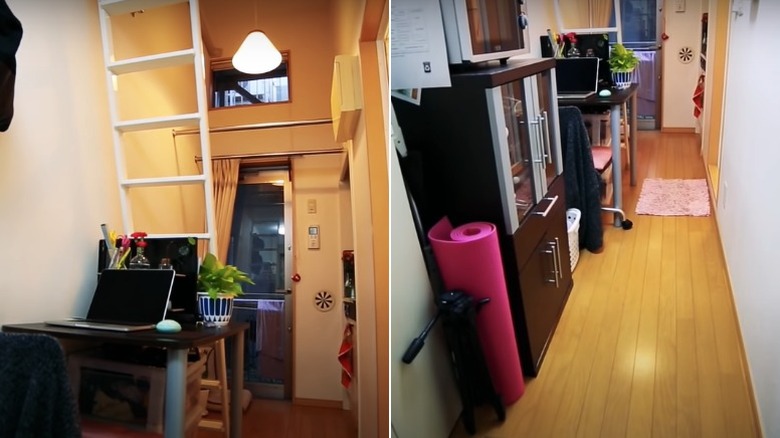What Exactly Is A Small Apartment?
Due to a shortage of available larger dwellings — and their increasing cost — there has been a downward trend in apartment size and what constitutes a small apartment. More accurately, an extreme shift. Apartments are shrinking as prices are soaring. According to Law Insider, since 2014, the definition of a small apartment went from less than 700 square feet to 650 square feet. Studios, once at the lowest end size-wise at around 350 square feet, have now dropped to second behind micro-apartments, the newest category for mini-housing and the smallest of the small.
Most of these tiny living units are between 200 and 400 square feet, with some as little as 100 — truly the definition of a small apartment, per Moving.com. Millennials and elderly singles represent the largest segment of micro-dwellers. Rentals can be less than 30% compared to the usual, but still might not be easily affordable. In Manhattan, less than 400 square feet of living space, for example, could cost as much as $3,000 (a month!), Treehugger reports.
As Realtor.com explains, a micro-apartment is the city counterpart to trendy tiny houses in non-urban areas. A micro-unit provides access to a coveted urban environment, with a minimum of living space, all at a minimized cost. Once illegal, micro-units rose from the demand for relatively affordable living spaces in costly cities, no matter how small. Zoning laws were changed to accommodate this burgeoning market and developers got green-lighted to build such apartment buildings from scratch, or carve up existing ones.
A truly small apartment
Cities such as New York, San Francisco, and Hong Kong are micro-housing hotspots. Tokyo is another, where the concept germinated from the desire for cheap modern housing, conveniently located to work and with size no concern. An average-sized micro-unit in Japan has been compared to the length of 3 tatami mats: 118.4 square feet.
Typically, these small apartments consist of a downsized blend of a bedroom, living area, kitchen, and bathroom, all crammed into a compact space, per Apartment List. They also feature high or vaulted ceilings and large windows designed to create an illusion of space where none exists. Some of the apartments have mini-balconies or patios as well. Many are already furnished. Murphy beds (which retract into the wall) and loft beds are practical in a micro-apartment, as is convertible furniture of all sorts. Fold-in tables are space-savers, too.
Bathtubs, meanwhile, are non-existent, and some of the kitchens in these extremely small apartments have miniaturized appliances. Many newer buildings offset the tiny living spaces by having luxurious common areas with lounges, pools, gyms, rooftop decks, even a bar in the lobby. There might be a common cooking space as well. Separate storage areas are a bonus, and if the price is right, some mini-dwellers even rent a second unit to compensate for the lack of space, closets, or drawers in their own. Needless to say, having a lot of possessions runs counter to living in such a small apartment.
Small apartment living indeed
These micro versions of the small apartment allow you to keep one foot in a desirable and convenient urban environment that normally would be prohibitively expensive. Most are rentals, but there are now some mini-condos for sale on the market. Given the demand, and with a smaller purchase price than other real estate properties, the micros are considered to be a good investment, according to Mashvisor.
Residing in a micro-apartment has been compared to living in a shoebox, or coming home to a glorified storage unit, as described by Boom Pay. However, in addition to allowing you to live in an otherwise out-of-reach neighborhood, there are some other benefits to the spartan lifestyle necessitated by such close quarters. Your Lilliputian home will be easier and less costly to heat and cool, and there will be less maintenance in general. Having few appliances will result in smaller utility bills. You'll also enjoy a more pared-down lifestyle as you jettison extraneous possessions and keep a minimum of furniture. Further, the combination of attractive common areas and little personal space for diversion and entertainment could prove a boon to one's social life.
Not all is positive, though. Claustrophobia is a constant threat in a small apartment, and a few hundred square feet of living space might rule out couples or roommates as tenants. There might not even be room for a TV or bookcase. You may have to buy all new, smaller items to fit into your miniature apartment. And you can forget about that Mastiff you always wanted.


